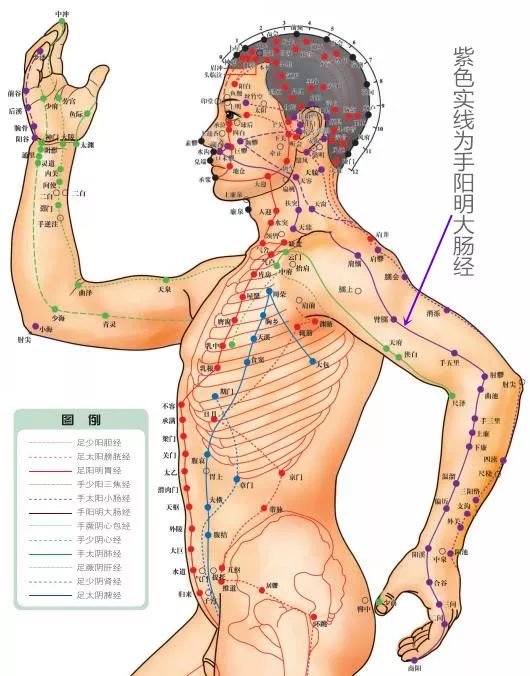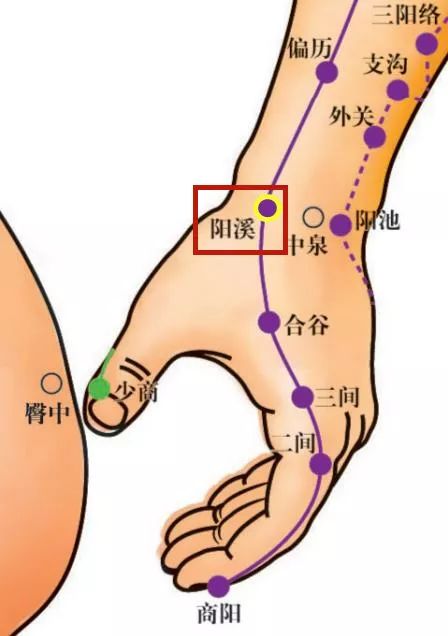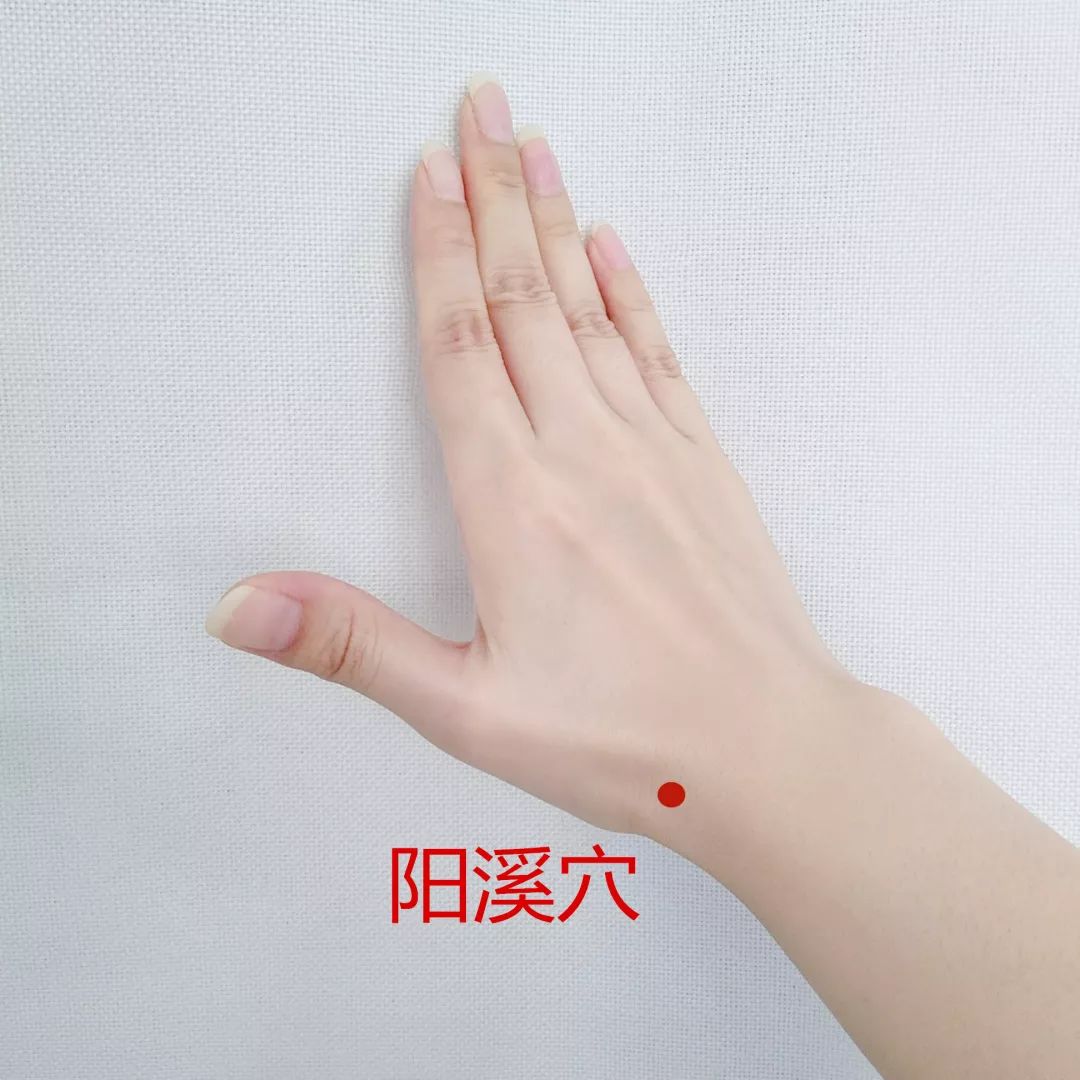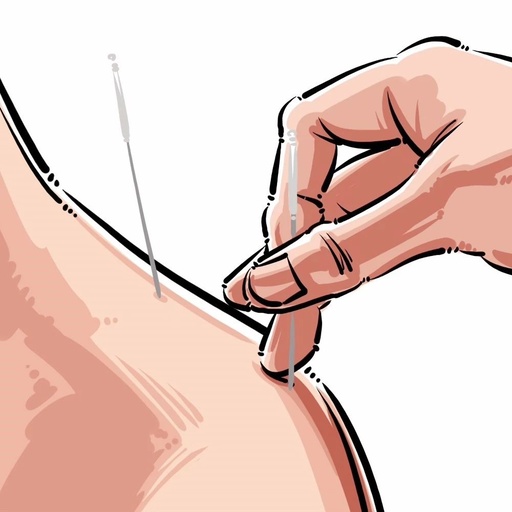Warm Reminder
This section aims to introduce the basic knowledge of acupoints in the human body, allowing everyone to have a fundamental understanding of them and a simple grasp of their application in external therapies such as moxibustion, cupping, and guasha. Many acupoints have high risks associated with needling; non-professionals in acupuncture should not attempt needling operations!
Hand Yangming Large Intestine Meridian
🔹 Meridian Pathway
This meridian begins at the radial side of the index finger (Shangyang), ascends along the radial side of the index finger, travels between the first and second metacarpal bones, and enters between the two tendons (the long and short extensor tendons of the thumb) (Yangxi). It continues along the radial side of the forearm, enters the outer side of the elbow (Quchi), then ascends along the outer side of the upper arm to the shoulder (Jianyu), meets the Governing Vessel at the Dazhui point, and then moves forward into the supraclavicular fossa, connecting with the lungs, descending through the diaphragm, and entering the large intestine. Its branch travels from the supraclavicular fossa to the neck, passes through the cheeks, enters the lower teeth, and returns to cross at the philtrum, ascending alongside the nostrils (Yingxiang). The qi of this meridian connects with the Foot Yangming Stomach Meridian.

🔹 Summary of Indications
This meridian’s acupoints are indicated for abdominal pain, borborygmus, diarrhea, constipation, dysentery, sore throat, dental issues, nasal discharge or bleeding, pain along the meridian pathway, heat swelling, or cold sensations.
Acupoints of the Hand Yangming Large Intestine Meridian
🔹 Yangxi (Acupoint)
[Source] “Huangdi Neijing Ling Shu: Ben Shu”: The large intestine connects with Hand Yangming, emerges at Shangyang… travels to Yangxi, which is located in the depression between the two tendons, and is a meridian point.
[Location] On the radial side of the wrist, in the depression between the tendons of the short and long extensor muscles of the thumb.

[Needling Method] Place the palm side down, extend the thumb straight up, and the depression on the radial side of the wrist is the point.

[Indications]
1. Wrist pain;
2. Headache, redness and swelling of the eyes, deafness, and other head and facial disorders.
[Applications]
The Yangxi point has the effects of calming the liver and subduing yang, promoting joint mobility, relaxing the meridians, and clearing heat and dispelling wind. It is indicated for headaches, tinnitus, deafness, toothache, conjunctivitis, malaria, tenosynovitis, hemiplegia, redness and swelling of the eyes, and irritability due to heat.
Yangxi point combined with Xingxue and Erjian points is suitable for eye pain; Yangxi point combined with Yingxiang and Yintang points is suitable for rhinitis; Yangxi point combined with Tinggong, Xiaguan, and Taichong points is suitable for deafness; Yangxi point combined with Taiyang, Meichong, and Quchai points is suitable for headaches; Yangxi point combined with Shuigou, Baihui, Fengchi, and Shixuan points is suitable for stroke.
Yangxi is a key point for tonifying yang qi and uplifting spirit. During a headache attack, pressing the Yangxi point with the thumb for more than half a minute can quickly relieve the headache. Yangxi is excellent for promoting meridian circulation; regularly pressing this point vertically with the thumb for 1-3 minutes can effectively prevent and treat strokes and persistent high fever.
Using moxa sticks for gentle moxibustion for 5-20 minutes once a day can improve conditions such as redness and swelling of the eyes, toothache, and low back pain. Note: Moxibustion is contraindicated on scar tissue at the Yangxi point.
Using the scraping method from top to bottom on the Yangxi point with moderate pressure until petechiae appear can relieve fever without sweating, headaches, and toothaches.
[Literature]
“Beiji Qianjin Yaofang”: Indicated for pain on the outer side of the arm and wrist, unable to lift.
“Yizong Jinjian”: Indicated for irritability due to heat, skin rashes, reversed qi headaches, sore throat, and symptoms of mania and fear.
“Zhenjiu Jia Yi Jing”: Irritability due to heat, eye pain with tears, reversed qi headaches, chest fullness with difficulty breathing, Yangxi is indicated. Malaria, severe cold, Yangxi is indicated. Skin rashes, Yangxi is indicated.
“Zhenjiu Dacheng”: Indicated for mania, laughter, seeing ghosts, irritability due to heat, eye wind, redness, and opacity, reversed qi headaches, chest fullness with difficulty breathing, cold and heat malaria, cold cough with foamy sputum, throat obstruction, tinnitus, deafness, and inability to lift the elbow and arm, skin rashes.
“Zhenjiu Zisheng Jing”: Toothache, flexing the thumb at the base joint (Yangxi point), moxibustion three times, initially feeling itching in the affected tooth, then hearing a sound in the tooth, and after three moxibustions, the pain stops and never recurs; for left pain, moxibustion on the right, and for right pain, moxibustion on the left.
“Xihong Fu”: Toothache, low back pain, and throat obstruction, how can Erjian and Yangxi diseases escape?
*Acupoint images are from the illustrated “Huangdi Neijing” published by Zitu Books
Cover | Eight Years Old
Photo | Yun Shao
Editor | Yun Shao

